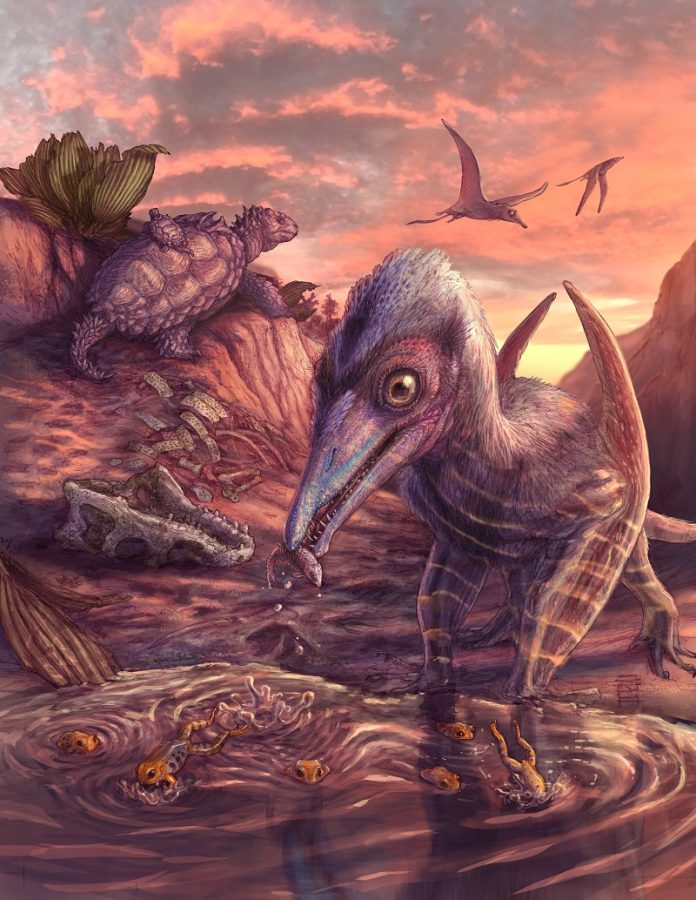
A team of researchers led by the Smithsonian has discovered the oldest known pterosaur fossil in North America.
Pterosaurs were flying reptiles that lived alongside dinosaurs and were the first vertebrates to achieve powered flight.
This exciting discovery, along with hundreds of other fossils, was made in a remote area of Petrified Forest National Park in Arizona.
The fossil is a jawbone belonging to a new pterosaur species about the size of a seagull. It was found in a bonebed dating back 209 million years, during the late Triassic period.
This was a time when giant amphibians and armored crocodile-like creatures lived alongside newer animals like frogs, turtles, and early flying reptiles.
Lead researcher Ben Kligman, a postdoctoral fellow at the Smithsonian, explained that this site offers a rare glimpse into a time just before a major extinction event.
Around 201.5 million years ago, massive volcanic eruptions caused a global climate shift that wiped out 75% of life on Earth. This opened the door for dinosaurs to rise to dominance.
Fossils from just before this extinction are hard to find, but Petrified Forest is one of the best places to look because of its rich Triassic fossil beds.
The fossil site, known as the Owl Rock Member, contains volcanic ash that helped scientists date the rocks to 209 million years old. Despite being some of the park’s youngest rocks, they have received little attention because they are located in hard-to-reach areas.
In 2011, a team exploring this remote area was originally looking for fossils of ancient mammal relatives. Instead, they stumbled upon a rich bonebed filled with fossils from a complete ancient ecosystem. Seasonal floods likely buried the creatures, preserving them in layers of ash and sediment.
Because the site had too many fossils to excavate at once, the team took large blocks of sediment back to the lab. At the Smithsonian’s FossiLab, volunteers spent thousands of hours carefully uncovering bones under microscopes, often in view of curious museum visitors.
In total, the team found over 1,200 fossils, including bones, teeth, fish scales, and fossilized droppings. The remains came from at least 16 different types of animals. These included freshwater sharks, coelacanths, six-foot-long amphibians, armored plant-eaters, crocodile-like predators, early frogs, and spiny turtles that could fit in a shoebox.
The new pterosaur species was found by longtime museum volunteer Suzanne McIntire, who worked at the FossiLab for 18 years. Her discovery included a jawbone with well-preserved teeth, which made it easier for scientists to identify the species. The teeth showed signs of wear, suggesting the pterosaur ate armored fish found at the site.
The new species has been named Eotephradactylus mcintireae, meaning “ash-winged dawn goddess,” to reflect the volcanic ash where it was found and its early place in pterosaur evolution. The species name honors McIntire, who retired last year.
This discovery adds to the long history of collaboration between Petrified Forest National Park and the Smithsonian, which has been collecting fossils and petrified wood from the area for over a century.



